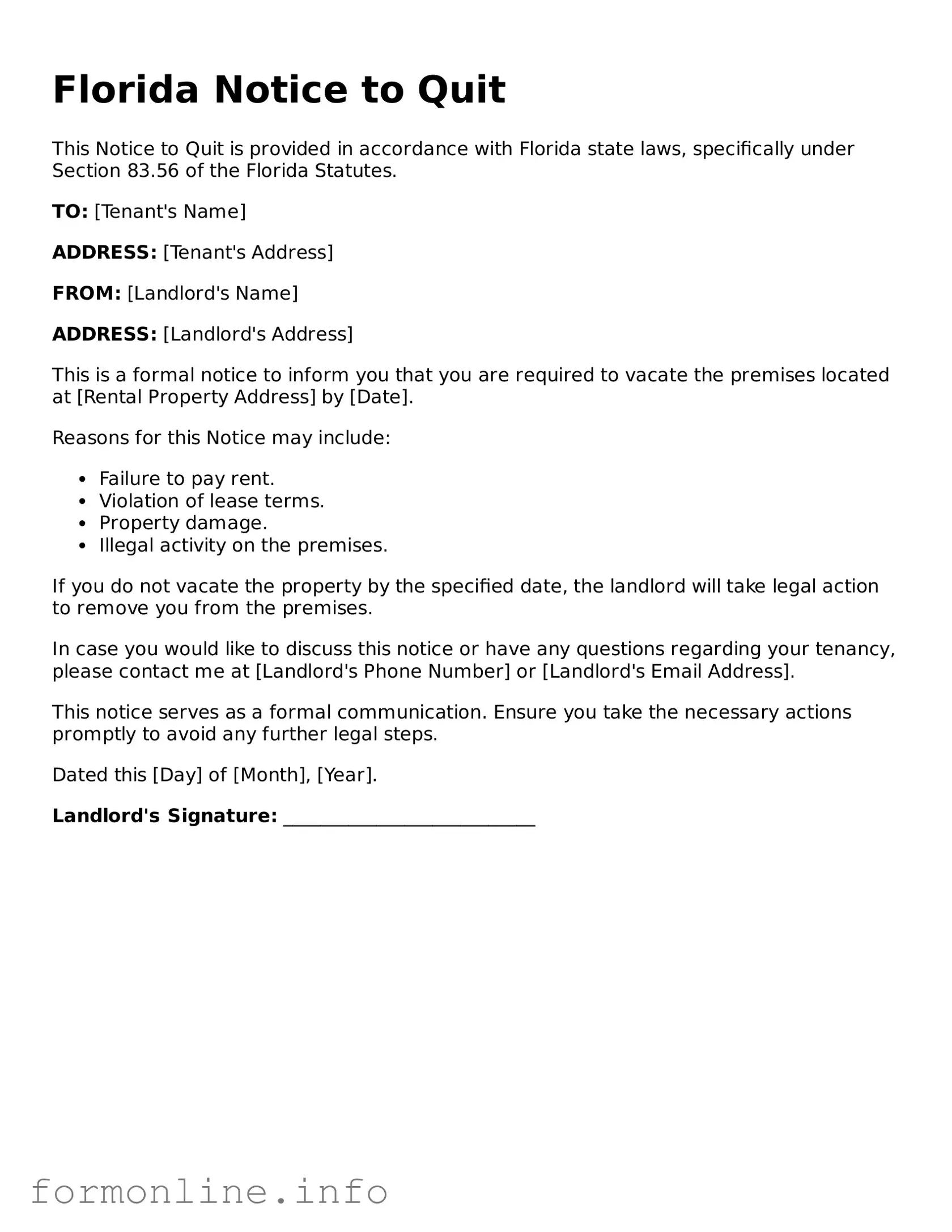Florida Notice to Quit
This Notice to Quit is provided in accordance with Florida state laws, specifically under Section 83.56 of the Florida Statutes.
TO: [Tenant's Name]
ADDRESS: [Tenant's Address]
FROM: [Landlord's Name]
ADDRESS: [Landlord's Address]
This is a formal notice to inform you that you are required to vacate the premises located at [Rental Property Address] by [Date].
Reasons for this Notice may include:
- Failure to pay rent.
- Violation of lease terms.
- Property damage.
- Illegal activity on the premises.
If you do not vacate the property by the specified date, the landlord will take legal action to remove you from the premises.
In case you would like to discuss this notice or have any questions regarding your tenancy, please contact me at [Landlord's Phone Number] or [Landlord's Email Address].
This notice serves as a formal communication. Ensure you take the necessary actions promptly to avoid any further legal steps.
Dated this [Day] of [Month], [Year].
Landlord's Signature: ___________________________
